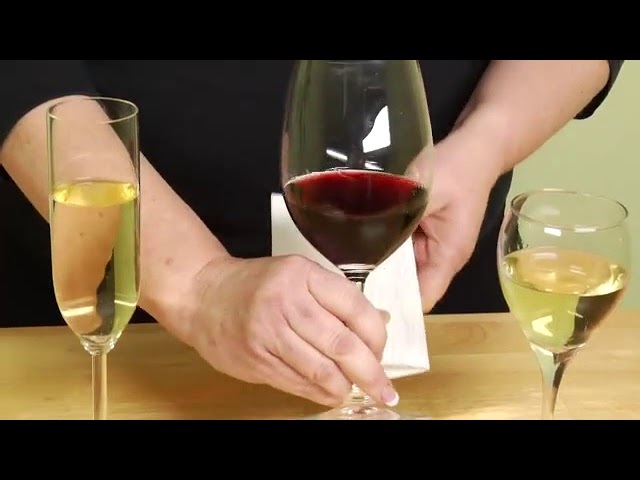Embarking on a journey through the world of wines uncovers a spectrum of flavors, aromas, and traditions that have been cultivated over centuries. At the heart of this exploration lies the quintessential debate: the difference between white and red wine. This article aims to delve deep into the nuances that distinguish these two celebrated categories, offering both novices and connoisseurs a comprehensive understanding that transcends the surface-level color distinction.
With meticulous attention to detail, we will navigate through the intricacies of winemaking processes, grape varieties, and the subtle dance of chemical compounds that contribute to the unique profiles of red and white wines. Our exploration is not merely academic; it is a celebration of the cultural heritage, artisanal craftsmanship, and the sheer joy that wine brings to tables around the globe.
The value of this content lies not just in distinguishing red from white but in enhancing your appreciation, selection, and enjoyment of wine. Whether you’re deciding on the perfect bottle to complement a gourmet meal, curious about the health implications of your favorite vintage, or embarking on a journey to refine your palate, this article promises insights that are both enriching and enlightening.
As we uncork the mysteries behind the colors in your glass, we invite you to savor each paragraph like a fine wine—slowly, deliberately, allowing the knowledge to unfold with each sip. By the end of this journey, you’ll not only understand the difference between white and red wine but also appreciate the passion and stories poured into every bottle. So, raise your glass, and let’s toast to the adventure that awaits in the captivating world of wines.
Understanding Wine
Which Wine is Healthier for You—Red or White?
When it comes to your health, both red and white wines have pros and cons. Let’s examine them in detail:
- Antioxidants – Red wine contains more antioxidants than white. These compounds may help lower inflammation and oxidative stress. However, experts debate the real impact of wine antioxidants on human health.
- Heart health – Moderate consumption of red wine has been linked to improved cholesterol levels and lower risk of heart disease. White wine lacks some of the heart-protective compounds present in red wine.
- Calories – Dry white wines tend to be lower in calories than red. For example, a 5 oz glass of red may have 125 calories, while a white would have about 120 calories. The difference is marginal.
- Risks – Drinking more than moderate levels of any alcoholic beverage can increase health risks, including liver damage and certain cancers. Moderation is key.
The takeaway? Red wine likely offers more potential health benefits, though white has its merits too. But moderation is vital – no more than 1 glass of wine per day for women and 2 glasses per day for men.
The Art of Wine Making
Now let’s explore the difference between white and red wine and get their start as grape juice and transform into delightful vintages through the winemaking process:
red vs white wine
| Winemaking Steps | Red Wine | White Wine |
| Grape Varietals | Typically from "black grapes" like Merlot, Cabernet, Pinot Noir. | Typically from "white grapes" like Chardonnay, Riesling, Sauvignon Blanc. |
| Grape Skin Contact | Prolonged skin contact during fermentation. This gives red wine its color and tannins. | Minimal skin contact. Juice is separated from skins quickly. |
| Fermentation | Occurs with grape skins and seeds present. Extracts color, flavor and tannins. | Usually occurs without skins or seeds. Preserves fruit flavors and aromas. |
| Aging and Maturation | Often aged in oak barrels for months or years, smoothing tannins. | Sometimes aged in steel or oak. Less tannins to soften. |
As the table shows, the core difference stems from the grape varieties used and skin contact time. Interesting fact – red wine grapes can actually make white wine if skin contact is limited.
Other factors like climate, soil, and yeast also shape a wine’s final character through a process called terroir. Understanding terroir helps explain the diversity of wines worldwide.
See more : Top 12 best white wine that is sweet that you should try!
Sustainable practices are also important to protect the vineyards for future vintages. Organic, biodynamic, and water-wise cultivation processes address environmental concerns in winemaking.

Delving Deeper into Difference between White and Red Wine
Now that we’ve covered winemaking basics, let’s explore the difference between white and red wine for advanced tasting techniques and food pairings:
Technical Tasting: Beyond the Basics
The starting points for tasting any wine are appearance, aroma, and flavor. But with practice, your senses can pick up subtle details:
- Visual clues – Tilt your glass to see variations in color, clarity, and rim hue. Reds may appear ruby, garnet, or brick-colored. Whites range from pale yellow to golden.
- Nosing nuances – Swirl to release aromas then sniff gently. Red wine scents may include black cherry, leather, pepper, vanilla. White wines offer notes of citrus, peach, grass, orchard blossoms.
- Palate profiler – Take a sip and let it coat your tongue. Chew gently. Reds may taste tart, tannic, oaky. Whites can be acidic, creamy, fruity. The finish or aftertaste is also important.
As wine ages, the profile changes. Young reds grow smoother and more complex. Whites lose their fruity edge, gaining nutty flavors. Become a connoisseur by tasting new vintages.
Culinary Delights: Cooking and Pairing with Wine
Both reds and whites make great partners for food. Some pairing tips:
- Cooking with wine – Use dry red or white wine in sauces, stews, and braises. Avoid oaky wines as the flavor will concentrate. Sweet white wine enhances fruit desserts.
- Protein pairings – Fuller-bodied red wines match nicely with steak, lamb, or game meats. Brighter whites complement fish, chicken, pork, and veal.
- Cheese plates – Soft cheeses pair well with fruity white wines. Aged, hard cheeses stand up to bold tannic reds.
- Veggie dishes – Roast chicken with veggies? Go with white. Heavy mushroom pasta? Open a red.
Feeling creative? Try these recipes:
- Coq Au Vin (Chicken braised in red wine)
- Mussels in White Wine Broth
- Chocolate Cherry Port Cupcakes (made with red wine)
The options are endless – mix, match, and find your favorites.
Consumer’s Corner: Buying and Enjoying Wine
As a wine shopper, consider these tips:
- Price – Good wines can be found between $10-$25. Expect higher prices for aged and complex vintages.
- Labels – Region, grape blend, vintage year and alcohol percentage offer clues to flavor. Terms like reserve, barrel select, and estate indicate higher quality.
- Collecting – Some fine wines age beautifully and gain value. Store properly in a cool, dark place.
- Serving temperatures – Reds, especially lighter ones, taste best slightly chilled at 60-65°F. Whites shine at 45-50°F.
- Wine clubs – Joining provides recommendations, discounts and new bottles monthly or quarterly. An easy way to build your wine IQ.
The most important rule? Drink what you enjoy. Don’t let wine snobbery intimidate you. Preferences vary. Savor each glass on your terms.

Cultural and Social Dimensions of White and Red Wine
See more : What is the Driest White Wine on the Market? | Find Out Now
Beyond taste, wine intertwines with culture, tradition, and relationships:
Cultural Influences and Wine Preferences
Regional terroir makes unique wine styles:
- France – Bordeaux reds blend power and elegance. Crisp, minerally whites come from Burgundy.
- Italy – Earthy reds include Barolo, Chianti, Valpolicella. Bright whites like Pinot Grigio and Orvieto.
- Spain – Tempranillo-based reds, zippy sparkling Cava, dessert Sherry.
- U.S. – Cabernet dominates in California. Oregon excels with Pinot Noir. New York produces Riesling.
- Australia – Potent Shiraz, fresh Chardonnay.
- South America – Malbec reigns in Argentina. Chile offers value Cabernet and Carménère.
Attitudes towards wine also differ. In Europe, wine integrates into daily life. In the U.S., wine newbies often feel intimidated. But learning together makes wine more accessible.
The Role of Wine in Social Settings and Traditions
Wine serves communal purposes:
- Gathering with friends over wine fosters social bonding
- Religious ceremonies often involve wine as a symbolic, shared drink
- Life milestones call for special bottles – births, weddings, anniversaries
- Business dinners pair wine with polite conversation
- Romantic meals wouldn’t be complete without a glass of wine
No matter the occasion, wine brings people together.
Sum Up: Differences Between White and Red Wine
Now you know the difference between white and red wine. To sum up, red and white wines differ in various aspects:
- Grapes Used: Red wines are made from red grapes like Pinot Noir and Cabernet Sauvignon, while white wines are made from white grapes such as Chardonnay and Pinot Grigio. Interestingly, most wines come from the same grape species, Vitis vinifera, with a natural mutation creating white grapes like Pinot Blanc.
- Fermentation Process: Red wines are fermented with grape skins and seeds, giving them their color and flavor, while white wines are not fermented with these parts. Some exceptions like Blanc de Noirs and Orange Wines exist where white wines are made with skin contact or red wine-making methods.
- Wine Making Methods: Red wines are known for their rich flavors due to oxidation in oak barrels, while white wines maintain zesty acidity and floral aromas by fermenting in stainless steel tanks. Tannins in red wines contribute to their complexity and aging potential, while acidity plays a crucial role in the flavor of white wines.
- Health Benefits: Red wines are often considered healthier due to compounds like tannins, resveratrol, and polyphenols found in grape skins and seeds. These compounds are associated with various health benefits. However, white wine has fewer calories.
In conclusion, the choice between red and white wine ultimately comes down to personal preference, with each type offering unique characteristics in terms of flavor profiles, health benefits, and grape varieties used.
Conclusion
What an adventure we’ve had contrasting and savoring red and white wines. From grape origins to future trends, production methods to pairing meals, no two wines are exactly alike. Yet all wines share the ability to create memorable moments that bring people together. Keep exploring, learning and appreciating the many gifts of wine. Where will your wine journey lead you next? Please share your own discoveries.


Ronald B Gamrot is the owner of Silverking Brewery, one of the most successful craft breweries in North America. He started the business from scratch in his garage, and it has since grown into a multimillion-dollar operation. Ronald is passionate about brewing delicious beer and providing top-notch customer service. He is a respected member of the brewing community and often speaks at industry events.




Isnt White wine made with white/yellow variety colored grapes. And red wine with dark red blue black grapes?
Actually, you can use either red or white wine grapes to make white wines. Most white wines do use green/yellow-colored grapes though
I prefer white wine. But i am an alcoholic and prefer whichever goes down easier. The taste tho is much stronger and richer with the black wine. So if you after rich taste red is better. If you wanna get drunk fast while still drinking a nice drink, white wine is superior
Yes, both white wine and red wine are great.
White and red wines can vary greatly in taste, aroma, and appearance depending on the grape variety used, the climate and soil conditions of the vineyard, and the winemaking techniques employed. Different countries also have their own unique wine cultures and styles, which can further contribute to the differences between white and red wines from different countries.
Yes, I agree!